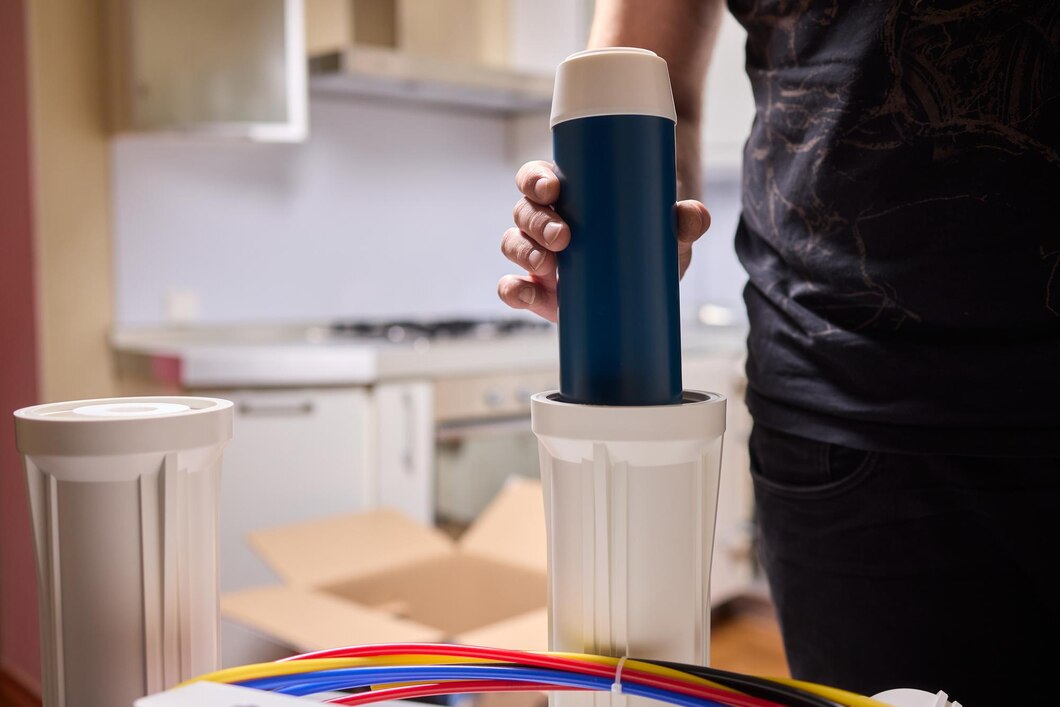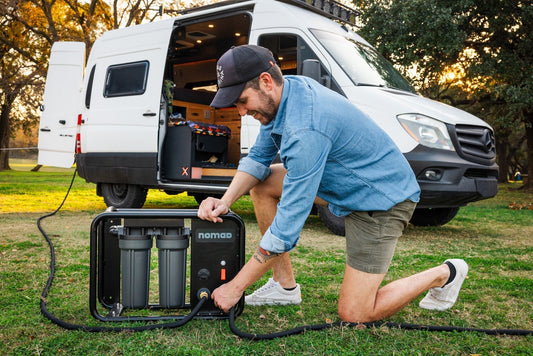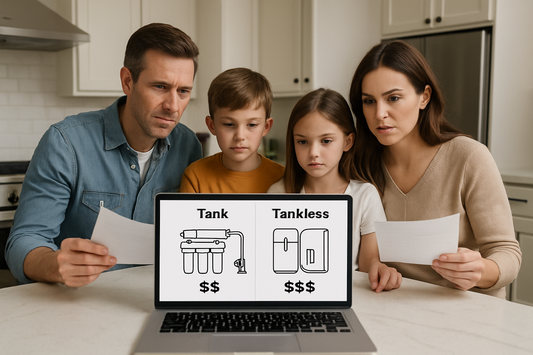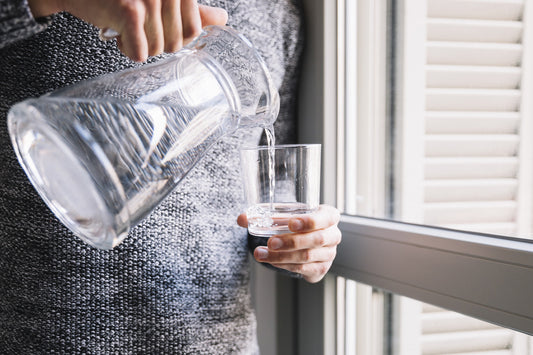If your under-sink water still tastes chlorinated or flows slowly despite recent filter changes, your single-stage system has hit its limits. Dual-stage filtration solves what single cartridges cannot: simultaneous removal of sediment AND chemical contaminants. Here's why upgrading your under sink replacement water filter cartridge to a dual-stage system delivers dramatically better results – and how to maintain it properly.
Single-Stage vs Dual-Stage: The Performance Gap
Most homeowners start with basic single-cartridge systems, but quickly discover their limitations when dealing with complex water contamination.
What Single-Stage Filters Actually Remove
Single-stage systems typically use activated carbon to tackle chlorine taste and odor. While effective for basic municipal water treatment, they struggle with:
- Heavy sediment loads that clog carbon quickly
- Multiple contaminant types requiring different filtration methods
- Consistent performance under varying water conditions
How Dual-Stage Systems Work Differently
Dual-stage filtration uses a two-step approach that dramatically improves performance:
Stage 1: Sediment Pre-Filtration The first cartridge captures larger particles like dirt, rust, and sand. This protects the second stage from premature clogging and extends overall system life.
Stage 2: Advanced Chemical Filtration The second cartridge focuses on dissolved contaminants like chlorine, pesticides, and heavy metals using specialized activated carbon or reverse osmosis technology.

Image by user36718402
Why Dual-Stage Systems Deliver Superior Results
Extended Filter Life
By separating sediment removal from chemical filtration, each cartridge operates more efficiently. The sediment pre-filter prevents the expensive second-stage cartridge from clogging with debris.
Better Contaminant Removal
Dual-stage systems remove up to 99% of chlorine, lead, and organic compounds compared to 70-85% for single-stage filters. This translates to noticeably better taste and safety.
Consistent Water Flow
Single filters often experience dramatic flow reduction as they clog. Dual-stage systems maintain steady pressure longer because sediment doesn't overwhelm the primary filtration media.
When to Choose Dual-Stage Over Single-Stage
Your Water Source Matters
Municipal Water Users: If your city water contains moderate to high chlorine levels or you notice sediment after rain, dual-stage filtration provides significant improvement over basic carbon filters.
Well Water Users: Dual-stage systems are essential for well water, which typically contains both sediment and dissolved minerals requiring different filtration approaches.
Signs You Need to Upgrade
- Frequent filter replacements (more than every 3 months)
- Persistent taste or odor issues after filter changes
- Noticeable water flow decrease within weeks of replacement
- Visible sediment or discoloration in filtered water

Image by EyeEm
Replacing Water Filter Cartridges in Dual-Stage Systems
Tools Required
- Filter wrench compatible with your housing size
- Replacement cartridges (both stages)
- Clean towels
- Bucket for water collection
Step-by-Step Replacement Process
Step 1: System Shutdown (2 minutes) Turn off the cold water supply valve and activate the pressure release on your filter housing. Place a bucket under both filter housings to catch spillage.
Step 2: First-Stage Replacement (5 minutes) Remove the sediment pre-filter housing using your wrench. Inspect the old cartridge – heavy sediment buildup indicates the system is working properly. Install the new sediment cartridge and hand-tighten the housing.
Step 3: Second-Stage Replacement (5 minutes) Replace the carbon or specialty cartridge in the second housing. These cartridges typically show less visible contamination but are equally important for chemical removal.
Step 4: System Restart and Testing (3 minutes) Slowly restore water pressure and check all connections for leaks. Run water for 3-5 minutes to flush any loose carbon particles from new cartridges.
Choosing the Right Dual-Stage System
Legacy Brand Considerations
While Pelican Water Systems built a strong reputation in dual-stage filtration, their residential under-sink options have become increasingly difficult to source. Many former Pelican users report supply chain issues and limited replacement cartridge availability.
Modern Alternatives That Outperform
Crystal Quest Dual-Stage Systems offer superior filtration with consistent cartridge availability. Their two-stage approach combines high-capacity sediment removal with advanced carbon block technology for comprehensive contaminant reduction.
Waterdrop Dual-Stage Options provide cost-effective performance with easy cartridge replacement and reliable supply chains.

Image by Antares_NS
Maintenance Schedule for Optimal Performance
First-Stage (Sediment) Replacement
Replace every 3-4 months or when water flow noticeably decreases. High-sediment areas may require monthly replacement.
Second-Stage (Carbon) Replacement
Replace every 6 months for average households. Monitor taste and odor changes as indicators for early replacement needs.
System Inspection
Monthly visual checks for leaks, quarterly flow rate assessment, and annual housing inspection ensure long-term reliability.
Cost Analysis: Single vs Dual-Stage
Initial Investment
Dual-stage systems cost 40-60% more upfront than single-cartridge filters, but deliver significantly better value through:
- Longer overall cartridge life
- Superior filtration performance
- Reduced maintenance frequency
Long-Term Savings
While water filter cartridges for dual-stage systems require two replacements, the extended life and better performance often result in lower annual costs compared to frequently replaced single filters.
Installation Considerations
Space Requirements
Dual-stage systems require more under-sink space than single cartridges. Measure your cabinet dimensions before purchasing to ensure proper fit.
Plumbing Compatibility
Most dual-stage systems install using standard 1/4" tubing connections compatible with existing single-stage setups.
FAQ Section
How often should I replace cartridges in a dual-stage system?
Replace the sediment filter every 3-4 months and the carbon filter every 6 months. High-usage households or poor water quality may require more frequent changes.
Can I upgrade my existing single-stage system to dual-stage?
Most single-stage systems can be upgraded by adding a sediment pre-filter housing. Complete replacement often provides better performance and warranty coverage.
Do dual-stage systems really taste better than single filters?
Yes, by removing sediment before carbon filtration, dual-stage systems deliver consistently better taste and odor removal throughout the cartridge life cycle.
What's the difference between dual-stage and reverse osmosis systems?
Dual-stage systems focus on sediment and chemical removal, while reverse osmosis adds membrane filtration for dissolved solids. RO systems are more comprehensive but require more maintenance.





